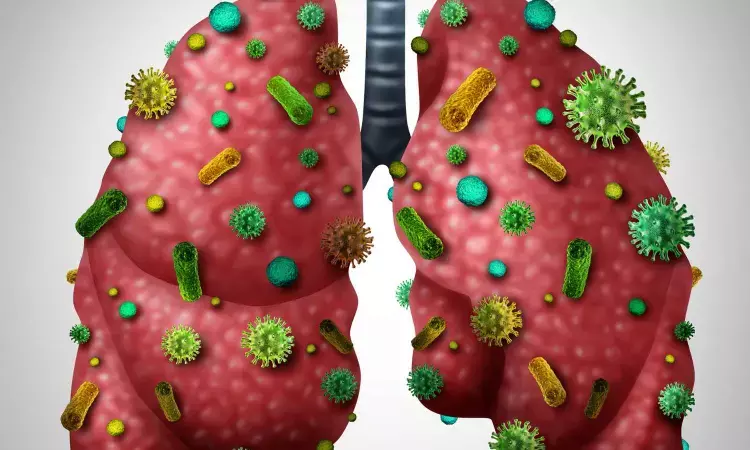- Home
- Medical news & Guidelines
- Anesthesiology
- Cardiology and CTVS
- Critical Care
- Dentistry
- Dermatology
- Diabetes and Endocrinology
- ENT
- Gastroenterology
- Medicine
- Nephrology
- Neurology
- Obstretics-Gynaecology
- Oncology
- Ophthalmology
- Orthopaedics
- Pediatrics-Neonatology
- Psychiatry
- Pulmonology
- Radiology
- Surgery
- Urology
- Laboratory Medicine
- Diet
- Nursing
- Paramedical
- Physiotherapy
- Health news
- Fact Check
- Bone Health Fact Check
- Brain Health Fact Check
- Cancer Related Fact Check
- Child Care Fact Check
- Dental and oral health fact check
- Diabetes and metabolic health fact check
- Diet and Nutrition Fact Check
- Eye and ENT Care Fact Check
- Fitness fact check
- Gut health fact check
- Heart health fact check
- Kidney health fact check
- Medical education fact check
- Men's health fact check
- Respiratory fact check
- Skin and hair care fact check
- Vaccine and Immunization fact check
- Women's health fact check
- AYUSH
- State News
- Andaman and Nicobar Islands
- Andhra Pradesh
- Arunachal Pradesh
- Assam
- Bihar
- Chandigarh
- Chattisgarh
- Dadra and Nagar Haveli
- Daman and Diu
- Delhi
- Goa
- Gujarat
- Haryana
- Himachal Pradesh
- Jammu & Kashmir
- Jharkhand
- Karnataka
- Kerala
- Ladakh
- Lakshadweep
- Madhya Pradesh
- Maharashtra
- Manipur
- Meghalaya
- Mizoram
- Nagaland
- Odisha
- Puducherry
- Punjab
- Rajasthan
- Sikkim
- Tamil Nadu
- Telangana
- Tripura
- Uttar Pradesh
- Uttrakhand
- West Bengal
- Medical Education
- Industry
Extended anaerobic coverage in aspiration pneumonia not associated with additional mortality benefit: Study

Aspiration pneumonia, a serious condition resulting from the inhalation of oral or gastric contents into the lungs, often requires antibiotic treatment. However, the optimal choice of antibiotics, particularly regarding anaerobic coverage, remains debated.
A recent study aimed to compare outcomes between antibiotic therapy with limited anaerobic coverage (LAC) versus extended anaerobic coverage (EAC) in patients with community-acquired aspiration pneumonia. This study was published in the journal Chest by Anthony D Bai and colleagues. Current guidelines do not recommend extended anaerobic coverage for aspiration pneumonia, yet it is still commonly prescribed.
A multicenter retrospective cohort study across 18 hospitals in Ontario, Canada, analyzed data from 3,999 patients diagnosed with community-acquired aspiration pneumonia between 2015 and 2022. Patients were categorized into LAC or EAC groups based on the antibiotics prescribed within 48 hours of admission. The primary outcome was in-hospital mortality, with Clostridioides difficile colitis incidence as a secondary outcome. Propensity score weighting was used to balance baseline factors between the two groups.
The key findings of the study were:
Of the included patients, 2,683 received LAC and 1,316 received EAC.
In-hospital mortality rates were 30.3% in the LAC group and 32.1% in the EAC group.
Clostridioides difficile colitis occurred in ≤0.2% of the LAC group and 0.8% to 1.1% of the EAC group.
After adjusting for baseline factors, the difference in in-hospital mortality between the EAC and LAC groups was 1.6%, with a 1.0% difference in Clostridioides difficile colitis risk.
The study suggests that extended anaerobic coverage does not provide additional benefits in terms of in-hospital mortality for patients with community-acquired aspiration pneumonia. However, it is associated with an increased risk of Clostridioides difficile colitis. These findings highlight the importance of aligning antibiotic therapy with evidence-based guidelines to optimize patient outcomes and minimize the risk of adverse events.
Reference:
Bai, A. D., Srivastava, S., Digby, G. C., Girard, V., Razak, F., & Verma, A. A. Anaerobic antibiotic coverage in aspiration pneumonia and the associated benefits and harms: A retrospective cohort study. Chest,2024. https://doi.org/10.1016/j.chest.2024.02.025
Dr Riya Dave has completed dentistry from Gujarat University in 2022. She is a dentist and accomplished medical and scientific writer known for her commitment to bridging the gap between clinical expertise and accessible healthcare information. She has been actively involved in writing blogs related to health and wellness.
Dr Kamal Kant Kohli-MBBS, DTCD- a chest specialist with more than 30 years of practice and a flair for writing clinical articles, Dr Kamal Kant Kohli joined Medical Dialogues as a Chief Editor of Medical News. Besides writing articles, as an editor, he proofreads and verifies all the medical content published on Medical Dialogues including those coming from journals, studies,medical conferences,guidelines etc. Email: drkohli@medicaldialogues.in. Contact no. 011-43720751


